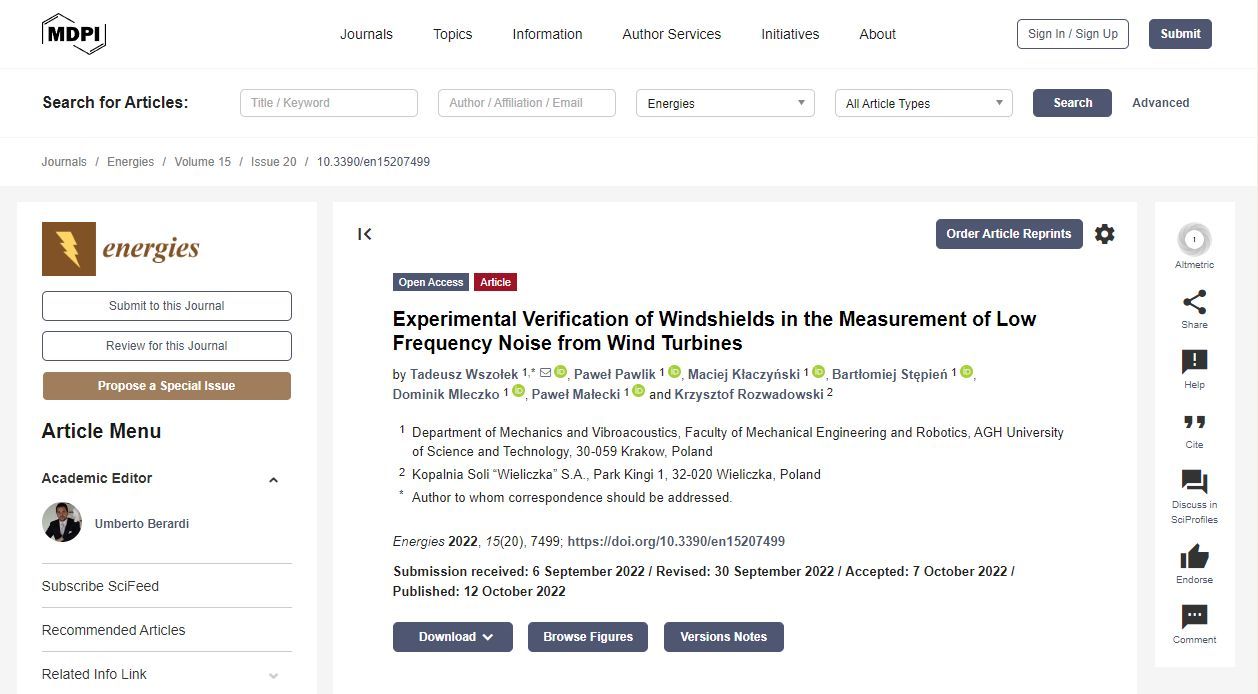6- Experimental Verification of Windshields in the Measurement of Low Frequency Noise from Wind Turbines
Measuring noise from wind turbines is a problematic metrological task due to the significant interference caused by the wind, especially in the low-frequency range. In the audible band, especially A-weighted, the impact of interference from wind is considerably less than in the low-frequency and infrasound bands. In the audible band, especially the A-weighted curve, the impact of interference from wind is significantly less than in the low-frequency and infrasound bands. For this reason, methods are still being sought to reduce interference from wind in the lowest frequency bands effectively. Experimental tests within the scope of the work were carried out using several windshields, with a single standard windscreen at 1.5 m and 4 m height, with an additional microphone shield (tent), and on the board with a double windscreen at a ground level according to IEC 61400-11. Experimental verification of a windshield’s effectiveness and impact under real conditions was carried out using a low-frequency noise source, which was the main fan station at the salt mine shaft. This source generates noise with similar spectral characteristics to wind turbines and can operate in windless conditions. This allowed noise measurements to be made without interference from the wind. Signals were recorded in windless and windy conditions at different wind speeds using tested windshields. An effectiveness analysis of the proposed measurement methods was also carried out on the wind farm. Performed research indicates that the best of the tested variants, when measuring wind turbine noise in the low-frequency range, is to place the microphone on the board with a double windscreen according to IEC 61400-11. At wind speeds of less than 5 m/s at 1.5 m above the ground, the shield effectively eliminates disturbances in the band above 4 Hz. Still, as the wind speed increases above 6 m/s, the level of disturbance increases, and its bandwidth in the lowest frequencies expands.
